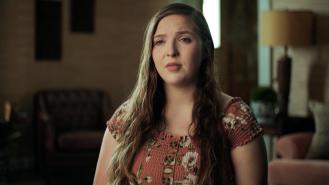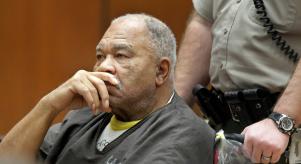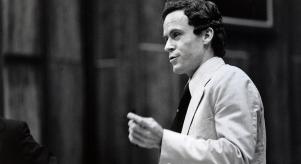
Female teachers who abused their power
We have a narrative for the people that abuse children: they are universally despised, the bottom-feeders even of the criminal world. A prison sentence can translate to a death sentence, as was the case forMitchell Harrison (who was disembowelled by other inmates while in prison in 2014) and the infamousJames King, who raped a three-month-old baby and filmed it. He was found hanged in his cell. His cellmate sounded the alarm, telling staff that he had woken up and found King, but there are reports he watched him die and didn’t do anything to help. He was also found covered in blood and wearing King’s watch, which sparked suspicion, but the death was ruled a suicide.
Then there are those who seek out positions of power that put them in proximity with children so that they can groom and abuse them, often over decades. Take William Vahey, a man who worked as a teacher in a school in London. He was described as ‘popular’ by children and staff. He drugged and molested his pupils while they were on school trips abroad. The FBI found footage of 90 children that Vahey had filmed while they were sleeping. He carried out the attacks over 40 years and is thought to have abused hundreds of children. He died by suicide after confessing. Keith Cavendish-Coulson was another teacher sentenced to prison for abusing his charges, some of whom were as young as eight. He had been molesting children in the 1970s, but it wasn’t until 2014 that he was sentenced to prison for the abuse of 24 children. Then there’s the case of piano teacher Ian Lake, who molested his male and female students over a minimum of 30 years. He lost his teaching job, but continued to perform professionally until he died in 2004. They are predators. They are monsters. And they are men. When it’s a woman abusing a student, a gender bias reveals itself in the way we discuss it.
Take Mary Kay Letourneau, probably the first name that comes up when you think of women that molested their students. In the 90s, she was a married teacher with young children. But that didn’t stop her from beginning an affair with student, Vili Fualaau. He was 12 at the time (they met when he was eight), born the year before Letourneau’s eldest son. Their first child was born when Fualaau was 13. He has since said that he struggled with alcohol abuse and depression, that he went through 'a really dark time'. He even said that he would oppose his own children entering into a similar relationship. They later got married, after Letourneau served a prison sentence and their 20-year relationship is now billed by some as a love story; the fact that they lasted so long together not evidence of a life ruined by Letourneau’s actions, but proof that they were meant to be. Letourneau was even given the opportunity to tell her story from her own point of view in a documentary.
Debra Lafave followed in 2004. She was 24 and married when she was accused of raping a 14-year-old student in Florida. The two had sex four times in three days, including once in a car while the boy’s cousin drove them around. Lafave even travelled with him to visit relatives who lived 100 miles away, alarming his aunt, who wondered what her nephew was doing with an adult in tow. But as Lafave is blonde-haired and blue-eyed, a former bikini model, much of the public reaction around the case wasn’t a pitchfork-wielding mob of outrage but jokes that the student got lucky. Lafave’s lawyer argued during her trial that she was too attractive to go to a state penitentiary. It turned out, the court agreed: she was put on probation and house arrest, instead.
Stephanie Peterson, another married teacher in Florida, molested a 14-year-old. She sent him nude photos, brought him cannabis and raped him, taking his virginity. His parents only found out when his grades began to drop and he confessed, crying. She resigned from school, was arrested and charged. Yet articles about her are illustrated with her bikini shots.
They all employed the same tactics as male teachers, targeting the young and vulnerable. But when it comes to women, we often treat it differently. It’s not a rape; it’s ‘seduction’, an ‘affair’. We joke that it’s any teenage boy’s dream to have sex with a hot teacher.
Judge Sheelagh Canavan put it best in 2017 when she sentenced the former teacher Alice McBrearty for raping a 15-year-old student in the London school in which she worked: 'What 15-year-old schoolboy would turn down such an attractive offer?'. But as Canavan pointed out, consent doesn’t exist when the child is underage. McBrearty was supposed to 'keep him safe'; instead, she abused her power over him. She pleaded guilty.
So why the double standard? Maybe it’s because we see women are nurturers, not aggressors. Their crimes are explained via a narrative of abusive partners, loneliness within relationships or a desire to help a student from a ‘troubled’ home life. They look to their victims to seek, or to give, comfort and love.
Their victims, on the other hand, are high-fived for fulfilling a fantasy. Unlike their female counterparts, male students are often seen as the willing participants of illicit affairs. Letourneau consistently paints Fualaau as the pursuer. There’s the attitude that ‘boys will be boys’. It speaks to the stigma that still exists around male rape and the shame that is often associated with it. But regardless of whether the student willingly entered into the relationship or not, consent can’t be given, so it’s abuse, molestation and rape regardless of the sex of the child. The boys are the victims of predators in the same way as girls that are groomed; they’re not teenagers that took ‘hot for teacher’ too far.





